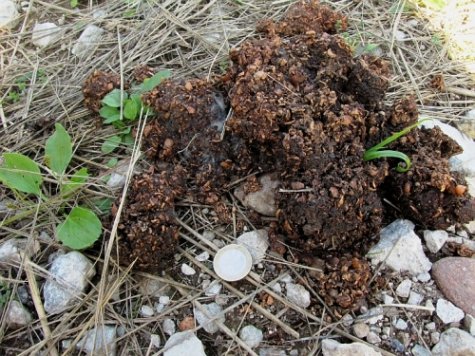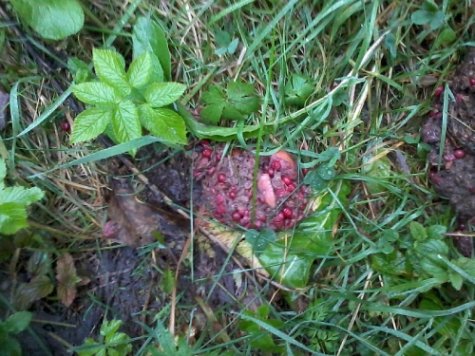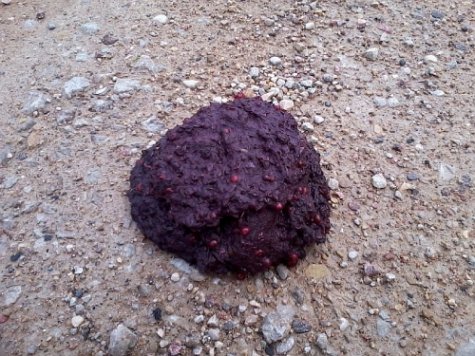Brown bear business in September and October
Text and photos Bert Rähni, www.360.ee
Translation: Liis
In September cranberries ripen and the bear droppings are quite decorative, containing large amounts of undigested red berries.
Bears are becoming visible again as a frenzied eating goes on to stock up enough fat for the winter hibernation. Visits to the feeding places set up by hunters for wild boars and to apple orchards become more frequent. Droppings contain undigested food: cranberries, cowberries, cereals, pieces of apples, and sometimes for instance wasps. While the moods of wild animals generally are difficult to read then „bear mischief“ offers much talking matter. A tree log on the path is thrown far into the shrubs, an empty wild boar feeding trough is smashed to sticks ... All that might prevent eating is knocked down in fits of „anger“. During autumn occasions of bears visiting bee yards are not rare; there they can get large amounts of food rich in carbohydrates (honey) as well as protein (bee brood).
In a good nut year they enjoy feeding on hazelnuts and then droppings consist largely of nut shells
The lingonberry harvest is very good in Alutaguse and actually in all Estonia and that is visible when looking for bear tracks in forest clearing lanes.
In October the bears need to collect the final fat reserves. Eat, eat, and the more and fatter – the better. In the period before the winter sleep bears may kill bovines too. In that period a bear can use up to 20 000 kilocalories of energy per day; it corresponds to roughly 400 apples. Thus an adult bear gains about 400 grams per day in weight. According to several sources a bear weighs 20 - 30% more in autumn than in spring, but the difference in weight of female bears preparing for giving birth in winter may even be twice that.
Towards the end of October the bears become more stationary, stay near their wintering places and their feeding intensity lessens noticeably.
Bear watching is arranged by www.360.ee :











